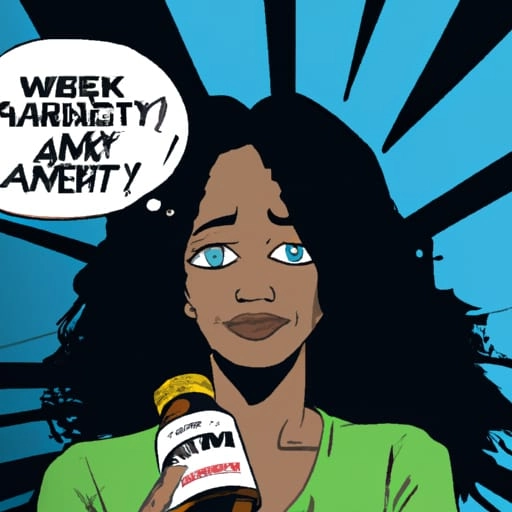The Secrets of Sertraline

Introduction to Sertraline or Zoloft
Sertraline is a antidepressant medication made by Pfizer that is used to treat depression and other mental health conditions. Sertraline has been around since the early 1970s, when a chemist at Pfizer named Reinhard Sarges made tametraline, a drug that blocks the reuptake of norepinephrine. This was intended to treat mental illness. In 1991, the U.S. Food and Drug Administration (FDA) gave it the brand name Zoloft so it could be sold in the U.S.
It works by making the brain make more serotonin, which helps control moods and feelings
Sertraline is mostly used as an antidepressant, but it has also been used off-label to treat posttraumatic stress disorder (PTSD), obsessive compulsive disorder (OCD), panic attacks, social anxiety disorder, (social phobia) and premenstrual dysphoric disorder (PMDD). It may also be used to treat some menopause symptoms and help people with chronic obstructive pulmonary disease (COPD) deal with anxiety and depression. It has also been looked at as a possible treatment for early ejaculation, but more research is needed to prove that it works for this.
Background
- Class of drug: SSRI
- Brand names of the medication: Zoloft
Indications for use:
Sertraline is used to treat major depressive disorder, obsessive-compulsive disorder, panic disorder, social anxiety disorder, post-traumatic stress disorder (PTSD) and premenstrual dysphoric disorder (PMDD).
Dosing and Administration of Sertraline
Good practice is to start or restart sertraline at a low dose and increase. We know there is a dose response effect, but that it diminishes, so you if you benefit from sertraline, it is likely you will benefit more from a higher dose. On the other hand if you do not benefit, it is unlikely an increase in dosage will make it work.
- The typical starting dose: 50 mg tablet once a day. We go up by 50mg steps, so the next dose step would be 100mg a day.
- The maximum dose: 200 mg per day
- The recommended dosing schedule: Once daily, with or without food.

Onset and Duration of Action of Sertraline
How long it takes for the medication to start working: Sertraline usually starts to work within 1-2 weeks, but it may take up to 4-6 weeks for full effects to be seen.
How long the medication lasts in the body (elimination half-life): Sertraline has an elimination half-life of about 26 hours. The dose of sertraline makes some difference to this.
Side Effects of Sertraline
Common side effects of the medication: Nausea, diarrhea, constipation, headaches, dry mouth, increased sweating, agitation, restlessness, dizziness, blurred vision, sleep problems, increase in appetite and weight gain, decreased sex drive, impotence, or difficulty having an orgasm.
In young people there is a small chance it may increase suicidal thoughts.
How to manage or minimize side effects: It is important to consult with your healthcare provider for any side effects that are severe or persistent.
Adverse effects are not common (apart from initial nausea for a few days) and sertraline is considered a safe medication that has been prescribed to many people over many years with a good track record. If it works, sertraline really can increase your quality of life
Some people find sertraline makes them sleepy and in that case, you can take it at bedtime. If it makes you wakeful, take in the morning
Overdose of Sertraline and What to Do
Signs of overdose:
Symptoms of an overdose may include: seizures, hallucinations, agitation, confusion, difficulty breathing, and coma.
What to do in case of overdose:
In case of overdose, call the Poison Control Center at 1-800-222-1222 or seek immediate medical attention.
If you believe you have overdosed on your medication, it is important to seek medical attention immediately. In the UK, you can call the National Health Service (NHS) at 111 for advice, or go to the nearest accident and emergency department. You should also bring the medication with you or provide as much information as possible about the medication, including the name, dosage, and how much you have taken.

Serotonin Syndrome
Serotonin syndrome is often caused by the use of certain medications that increase serotonin levels in the body, such as antidepressants, painkillers, and illegal drugs. It can also occur when a person takes a combination of medications that increase serotonin levels. The risk of serotonin syndrome is increased if you are taking more than one medication that modulates your serotonin: e.g. two antidepressants at the same time, or using anti migraine medication like sumatriptan or another of that class.
If you are taking medications that increase serotonin and experience any of the above symptoms, it is important to seek medical attention immediately.
Symptoms of serotonin syndrome can include:
- Agitation or restlessness
- Confusion
- Rapid heart rate
- High blood pressure
- Dilated pupils
- Loss of muscle coordination or twitching muscles
- Muscle rigidity
- Heavy sweating
- Fever
- Headache
- Shivering
- Goosebumps
If you are experiencing any of these symptoms and are taking medication that increases serotonin levels, such as antidepressants or pain medications, it is important to seek medical attention immediately as serotonin syndrome can be life-threatening.
Interactions
- Other medications, supplements, or foods that interact with the medication: Sertraline may interact with warfarin, ibuprofen, nonsteroidal anti-inflammatory drugs (NSAIDs), and aspirin. It is also important to avoid consuming large amounts of orange juice while taking sertraline as it may lead to increased levels of the medication in the blood.
- How to manage or avoid interactions: Inform your healthcare provider of all medications, supplements, or foods you are taking before starting Sertraline. Your pharmacist is also a useful person to talk to about this.
Monitoring
- Regular monitoring of the patient’s progress and side effects by a healthcare professional: It is important to have regular follow-up visits with your healthcare provider to monitor your response to the medication and to discuss any side effects or concerns.
Cautions and Contraindications
- Factors that may make the medication less safe or less effective: Sertraline should be used with caution in patients with a history of seizures or with conditions that lower the seizure threshold.
- Any preexisting medical conditions that might rule out taking this particular medication: Inform your healthcare provider of any medical conditions you may have before starting Sertraline.

Tapering off Sertraline
- Information on how to safely taper off the medication if a patient wishes to stop taking it: Sertraline should not be abruptly discontinued. It is important to work with your healthcare provider to taper the dose gradually to minimize withdrawal symptoms such as dizziness, agitation, and irritability.
Cost
In the United States, 30 x 50 mg tablets of Zoloft will cost you $444.61 (2022) — somebody is being ripped off by their health system here.
The cost of 30 x 50 mg tablets of Zoloft to the British NHS is £8.89 (2021)
You can get it online via https://www.drugs.com/price-guide/sertraline at about $11.11 (2023)
Related Posts
How Long Does Paroxetine Stay In Your Body? (Paxil)
Fluoxetine (Prozac)
Zoloft vs Lexapro for Anxiety: Which is Best?
5 Most Effective Antidepressants for Anxiety and Depression
101 Fascinating, Amazing and Sometimes Worrying Antidepressant Statistics: 2023






